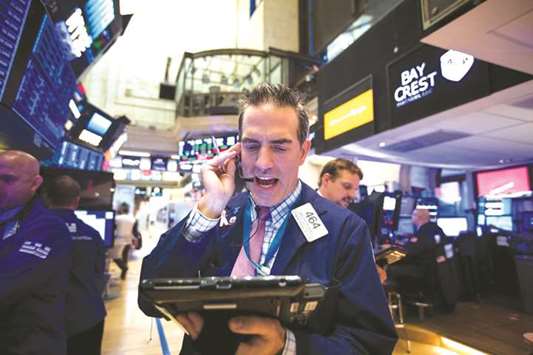“Volatility is back,” the Bank for International Settlements reckons, and speculators are betting big on its return.
But after a brief and dramatic appearance earlier this year, volatility in fact seems to have slunk back into the shadows.
Hedge funds and speculators have had a poor start to the year, crushed by the spike in volatility in the first week of February and failing to recover since.
What’s also curious is the inability of stocks and other risk assets to fully regain their upward momentum despite the reduction in volatility.
Implied volatility across major equity, bond and currency markets continues to decline following the sudden blow out in the first week of February that wiped trillions of dollars off the value of world shares.
This is making life difficult for traders, who are caught between two stools: do they adopt a more defensive position in anticipation of permanently higher volatility, or do they resume the pre-February “risk on” profile now that volatility has fallen back?
After spiking above 50% in early February, the VIX index of implied volatility on the S&P 500 is now 16%, below its historical average of 19%.
Last week it fell to 13%, close to last November’s record low below 9%.
Hedge funds and speculators are doubling down on their wager it will rise.
The latest data from the Chicago futures markets show hedge funds and other speculators are holding the second biggest long position in VIX futures ever, only behind the peak net long immediately following the volatility burst in early February.
Last week’s increase followed three weeks of scaling back that record bet, and was the fourth largest ever week-on-week rise.
Speculative investors, at least, are betting big on volatility returning.
But as analysts at JP Morgan point out, the $60bn community of hedge funds whose strategies revolve around volatility is struggling, even those that should have profited from the spike in vol last month.
“Volatility hedge funds performed poorly across all categories during February.
Short vol, relative value, long vol and tail risk funds all performed poorly,” Nikolaos Panigirtzoglou and his team wrote in a note last week.
Short vol strategies, which pay off if volatility falls, lost 3.9% last month, according to Eurekahedge.
Unsurprising, perhaps, given what happened on February 5, but still the worst month since August 2015 and one of the worst in years.
Yet long vol strategies, which should benefit from higher volatility, were up only 0.35% in February, Eurekahedge figures show.
This suggests these funds may not be adequately leveraged to benefit from any a spike in volatility this year, according to JP Morgan’s strategists.
The consensus view among analysts is that market volatility will indeed be higher this year than last, an uncontroversial view given it had never been lower in the months up to February.
It’s a view shared by the world’s top central banks.
“No doubt, the wobble (in February) has shaken off some positions – the equivalent of pressing a ‘reset’ button,” said Claudio Borio, Head of the Monetary and Economic Department of the BIS, on Sunday.
“Policymakers need not fear volatility as such. Along the normalisation path, some volatility can be their friend.”
But it’s not been friendly to investors this year, whether rising or falling.
The Dow is flat on the year, European stocks are on course for their second monthly fall in a row, and apart from the tech-heavy Nasdaq no major market has revisited the peaks of late January.
* Jamie McGeever is a columnist for
Reuters. The opinions expressed here are those of the author.

A trader works on the floor of the New York Stock Exchange. Implied volatility across major equity, bond and currency markets continues to decline following the sudden blow out in the first week of February that wiped trillions of dollars off the value of world shares.


